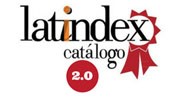The Compositive Dimensions of the Journalistic-Literary Story: The Construction of Time, Space and Dialogues in the Chronicle of Ecuatorian Authors
DOI:
https://doi.org/10.69890/hallazgos21.v3i2.284Keywords:
Journalism; Chronicle; Temporary construction; Space construction; Use of dialogues.Abstract
The theoretical orphanhood and the scarce academic argumentation in the journalistic field find an important contribution in literary studies. In fact, literature has helped to understand problems or phenomena of journalism. The study of their relationships has a great tradition known as literary journalism. In this sense, the journalistic-literary story aims to build a version of reality and not just reproduce it. For this, it appeals to a process of textual construction in which the classic dimensions of every story are present, such as temporal construction, spatial construction and the use of dialogues. In this paper, I address these dimensions as present in chronicles of Ecuadorian authors with the purpose of analyzing the way in which the journalistic-literary story configures the real from the creation of a symbolic world with its own laws.
References
Ampuero, M. (2013). Que no ves que estamos en crisis [on-line]. Revisado el 9 de enero de 2018. Recuperado de: http://gatopardo.com/ReportajesGP.php?R=145
Andrade, J. (2014). “Galápagos: the ecuadorian dream”. [on-line]. Revisado el 17 de enero de 2018 desde Internet: Blog Cultura B. Revisado el 19 de marzo de 2015. Recuperado de: http://culturab.blogspot.com/2010/08/ecuadorian-dream-pluma-de-oro-jorge.html
Bajtin, M. (1989). Teoría y estética de la novela. México D.F.: Siglo XXI.
Bobes, M. (1992). El diálogo. Estudio pragmático, lingüístico y literario. Madrid: Gredos.
Galdós, B. (2007). El abuelo. Madrid: Alianza Editorial.
Gargurevich, J. (1982). Géneros periodísticos. Quito: Belén.
Genette, G. (1989). Figuras III. Barcelona: Lumen.
Hollowell, J. (1977). Realidad y ficción. El Nuevo Periodismo y la novela de no ficción. México D.F.: Noema Editores.
Hoyos, J. (2003). Escribiendo historias. El arte y el oficio de narrar en el periodismo. Medellín: Editorial Universidad de Antioquia.
Matamoros, I. (2013). En el Guasmo suena Mozart [on-line]. Revisado el 7 de enero de 2018. Recuperado de: http://www.revistamundodiners.com/?p=1768
Ricoeur, P. (1995). Tiempo y narración: Configuración del tiempo en el relato histórico. México D.F.: Siglo XXI Editores.
Ricoeur, P. (1982). La función narrativa y la experiencia humana del tiempo. Revista Escritos de Teoría, 23, 70–91.
Ricoeur, P. (1987). Tiempo y narración 2: Configuración del tiempo en el relato de ficción. Madrid: Ediciones Cristiandad.
Rosero, S. (2014). Sociedad de juerguistas elegantes [on-line]. Revisado el 11 de enero de 2018. Recuperado de: http://www.gatopardo.com/ReportajesGP.php?R=131
Sims, N. (1984). The literary journalists. New York: Ballantine Books.
Surmelian, L. (1968). Character in Fiction. Techniques of Fiction Writing: Measure and Madness. Nueva York: Anchor Book edition.
Wolfe, T. (1976). El Nuevo Periodismo. Barcelona: Anagrama.
Downloads
Published
How to Cite
Issue
Section
License
Los artículos enviados a la Revista Científica Hallazgos21 deberán ser totalmente originales e inéditos.
Los autores son los responsables de los textos y las imágenes incluidas en los artículos y no necesariamente reflejan el pensamiento de la editorial o de la Pontificia Universidad Católica del Ecuador, Sede Esmeraldas (PUCESE).
Los autores disponen cederle a la Revista Científica Hallazgos21 todos los derechos inherentes para la edición, publicación y distribución o divulgación del mismo.
Se autoriza a las revistas firmantes de los acuerdos de Encuentros de Revistas Latinoamericanas para reproducir en parte o totalmente los artículos con la sola mención de la fuente claramente señalada.







